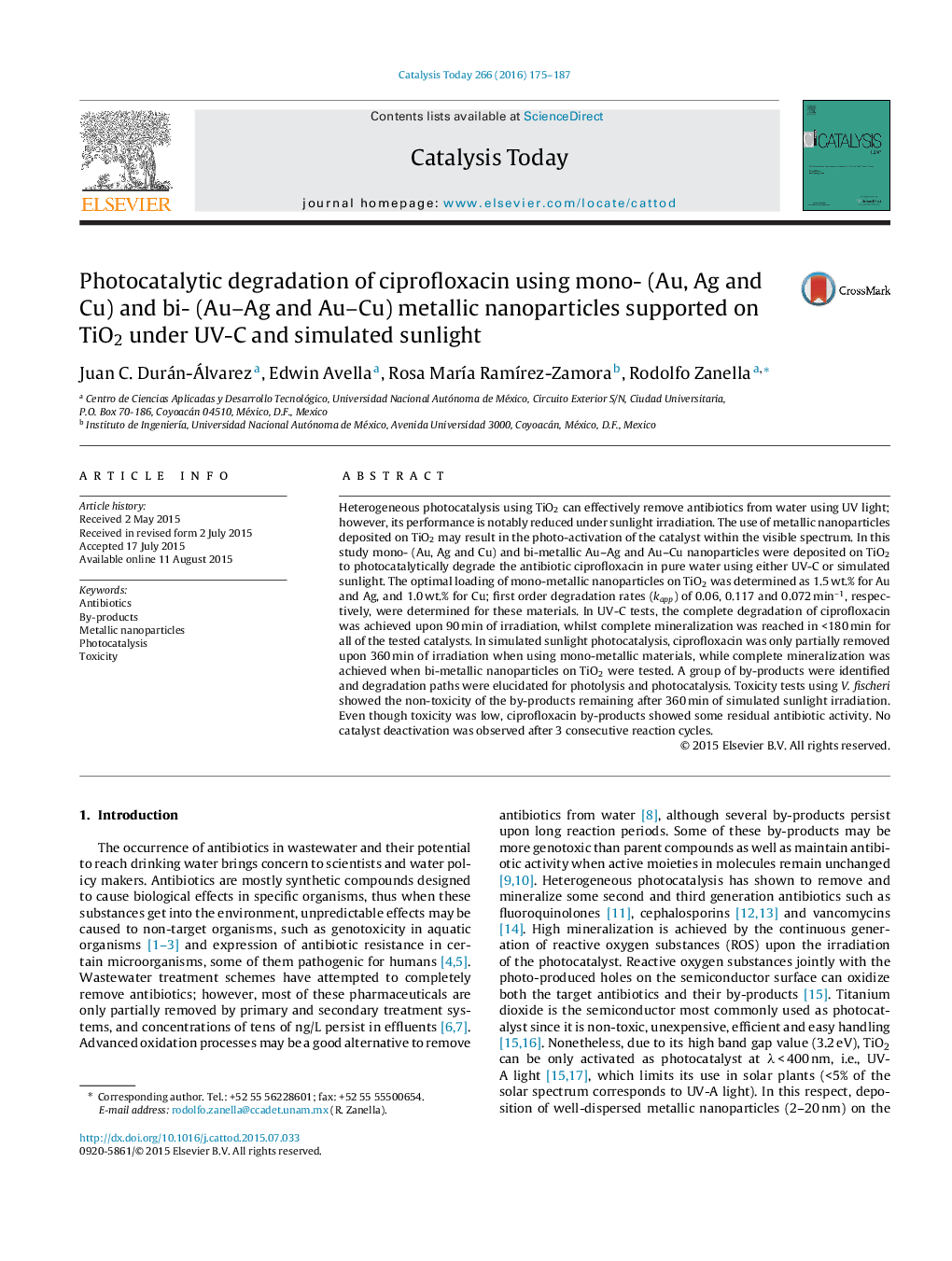| کد مقاله | کد نشریه | سال انتشار | مقاله انگلیسی | نسخه تمام متن |
|---|---|---|---|---|
| 53693 | 46979 | 2016 | 13 صفحه PDF | دانلود رایگان |

• Surface modified TiO2 with metallic NPs used for ciprofloxacin degradation.
• Complete degradation and mineralization were achieved in UV-C irradiation tests.
• Incomplete mineralization was observed in sunlight tests using monometallic NPs.
• Degradation paths determined for ciprofloxacin in photolysis and photocatalysis.
• Non-toxicity and low residual antibiotic activity found in effluents.
Heterogeneous photocatalysis using TiO2 can effectively remove antibiotics from water using UV light; however, its performance is notably reduced under sunlight irradiation. The use of metallic nanoparticles deposited on TiO2 may result in the photo-activation of the catalyst within the visible spectrum. In this study mono- (Au, Ag and Cu) and bi-metallic Au–Ag and Au–Cu nanoparticles were deposited on TiO2 to photocatalytically degrade the antibiotic ciprofloxacin in pure water using either UV-C or simulated sunlight. The optimal loading of mono-metallic nanoparticles on TiO2 was determined as 1.5 wt.% for Au and Ag, and 1.0 wt.% for Cu; first order degradation rates (kapp) of 0.06, 0.117 and 0.072 min–1, respectively, were determined for these materials. In UV-C tests, the complete degradation of ciprofloxacin was achieved upon 90 min of irradiation, whilst complete mineralization was reached in <180 min for all of the tested catalysts. In simulated sunlight photocatalysis, ciprofloxacin was only partially removed upon 360 min of irradiation when using mono-metallic materials, while complete mineralization was achieved when bi-metallic nanoparticles on TiO2 were tested. A group of by-products were identified and degradation paths were elucidated for photolysis and photocatalysis. Toxicity tests using V. fischeri showed the non-toxicity of the by-products remaining after 360 min of simulated sunlight irradiation. Even though toxicity was low, ciprofloxacin by-products showed some residual antibiotic activity. No catalyst deactivation was observed after 3 consecutive reaction cycles.
Figure optionsDownload high-quality image (167 K)Download as PowerPoint slide
Journal: Catalysis Today - Volume 266, 15 May 2016, Pages 175–187